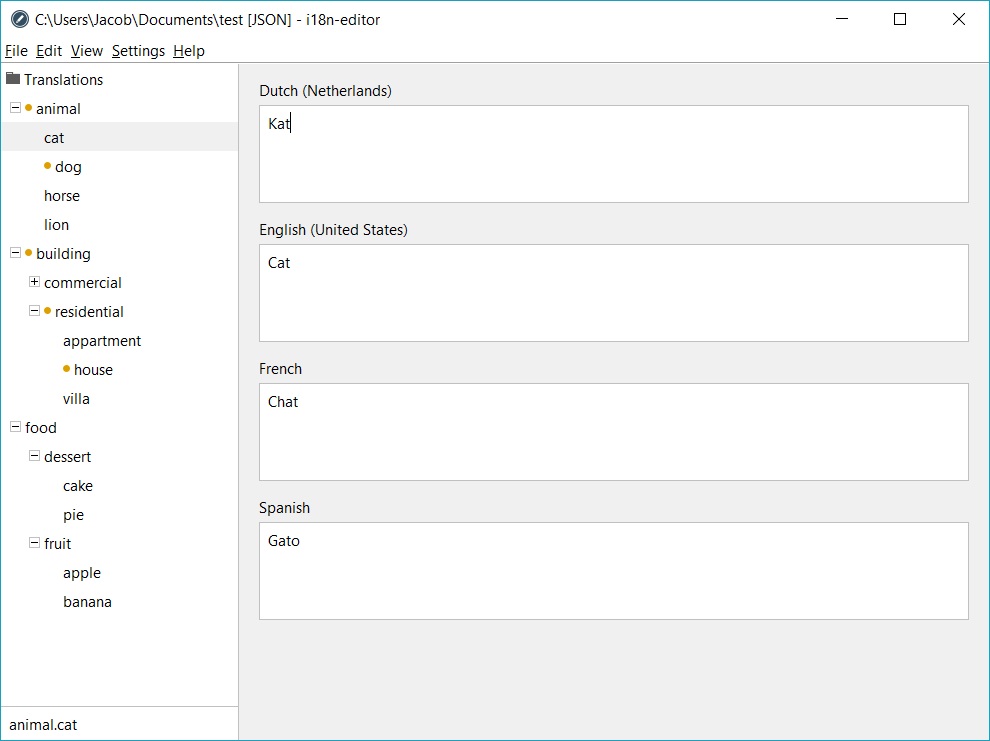THIS PROJECT IS NO LONGER MAINTAINED
i18n-editor 
This application lets you manage multiple translation files at once.
The editor supports translation files with the following format:
JSONES6(JSON wrapped in a javascript ES6 module)Properties(java properties files, for example to be used for a ResourceBundle).
Features
- Editing multiple translation files at once.
- Creating new translations/locales or editing existing ones.
- Renaming, duplicating, creating or deleting individual translations.
- Detecting missing translations.
- Supports multiple project layouts.
- Supports custom file naming.
- Supports file minification.
- Supports both nested and flat JSON/ES6 structure.
Requirements
The application requires java 8 to be installed on your system.
http://www.oracle.com/technetwork/java/javase/downloads/jre8-downloads-2133155.html
Download
You can download the latest release by going to this page and downloading the .zip file.
If you're on Windows you can install the application by running the .exe file. If you're on Mac you can use the application by running the .app file. If you're on Linux you can use the application by running the .jar file.
Usage
Getting started
To start, open the application and go to File > New Project to create a new project. After choosing the desired file format for your translations, select the root folder where you want to store your translation files. After selecting the root folder you'll be asked to add your first locale. From here you can add more locales by going to Edit > Add Locale... or start adding translations either via Edit > Add Translation..., via the right click menu in the left side panel or via the key field at the bottom of the left side panel. Each time you start the editor it will open the last project you was working on. You can always import an existing project by going to File > Import Project... and selecting the root folder of your existing project or by simply dragging your project folder into the application.
Project layout
The translations files can be stored in two different ways. Either using flat or folder structure. This setting can be changed in the settings menu, the default setting is flat structure.
Flat structure
When using the flat structure the translation files are all in the same folder and follow the name pattern translations_en_US, translations_nl_NL etc. (the name and place of the locale within the name can be changed in the settings menu). When you create a project with a flat structure there will also a file be created called translations, this is a file you can use as default/fallback translation file (if you don't need a default/fallback file, you can simply remove it from your project folder).
Folder structure
When using the folder structure folders will be named after the locales and the files within these folders will be of the form translations (the name can be changed in the settings menu).
Changing settings
You can access the settings of the editor by going to Settings > Preferences.... Here you can change the project file structure, the filename of the translation files you want to use (by default they are named translations), select whether you want to minify and or flatten the translations on save and change interface related properties. Some of this settings can also be applied on each project individually via Settings > Project Preferences....
Help translating
Do you want this editor to be in your native language? You are free to create a pull request or issue with a new translation file of your desired language. Take a look at src/main/resources/bundles on how to create a translation file.
License
This project is released under the MIT license.
